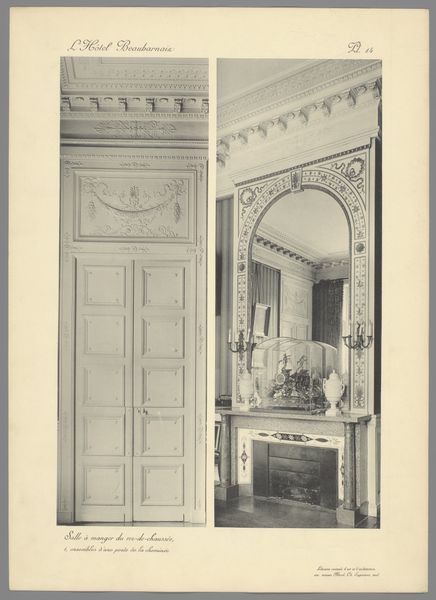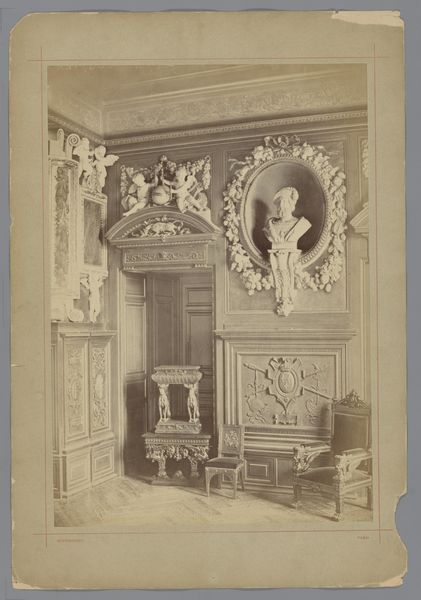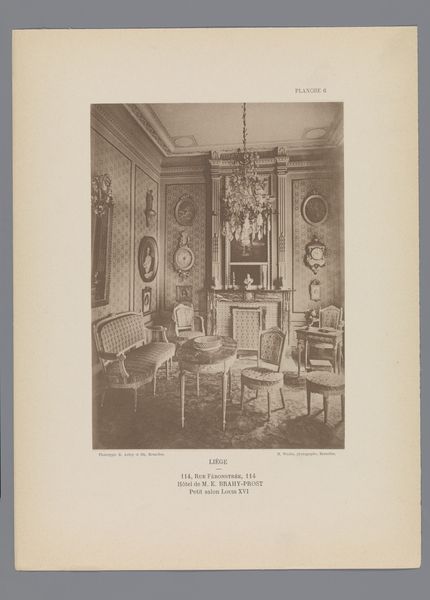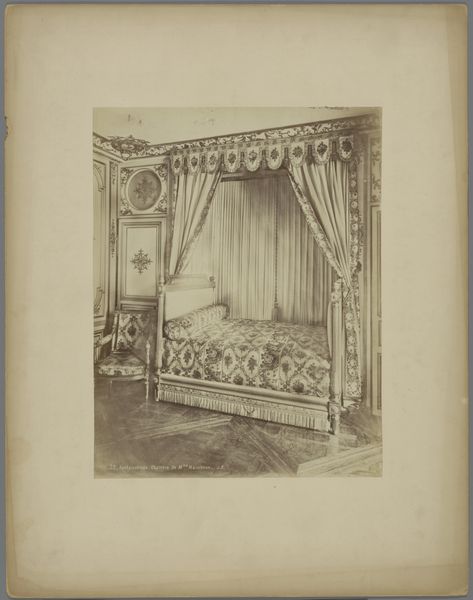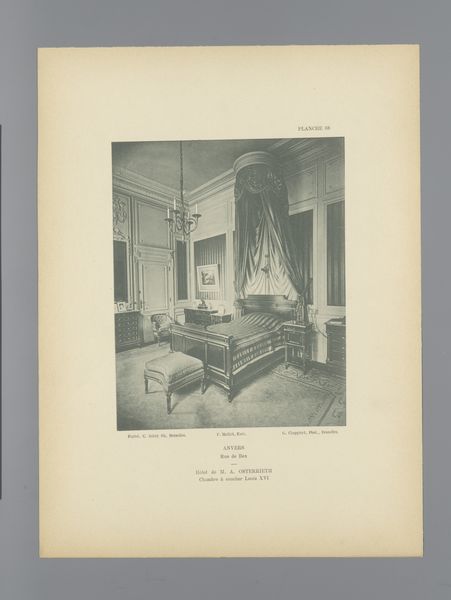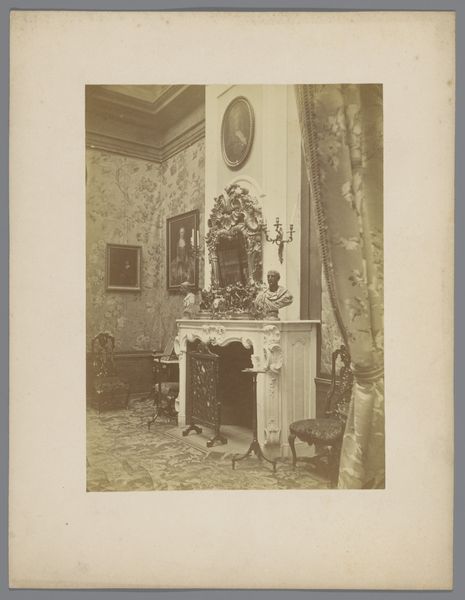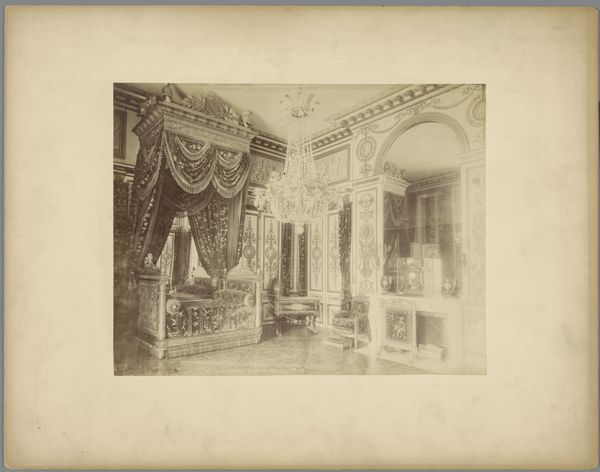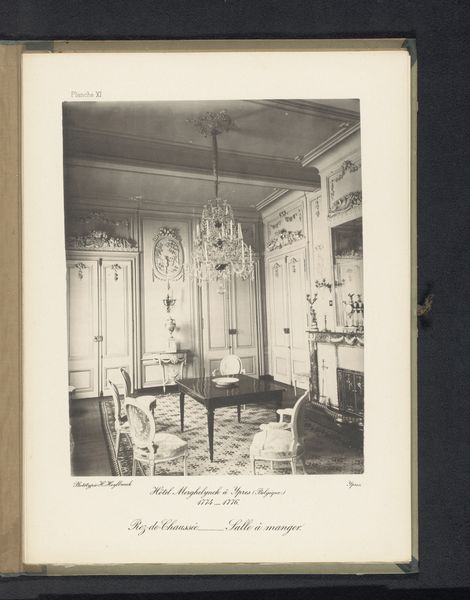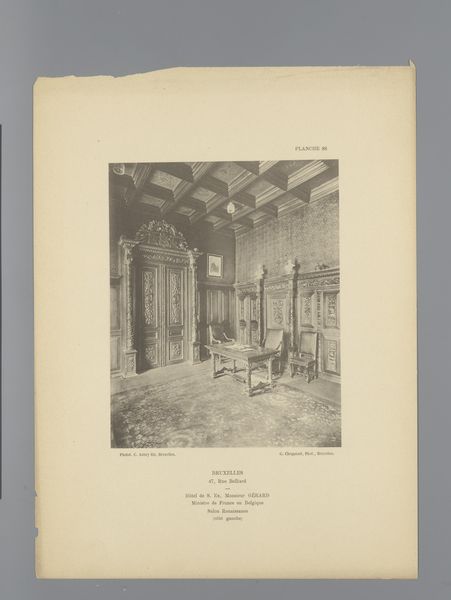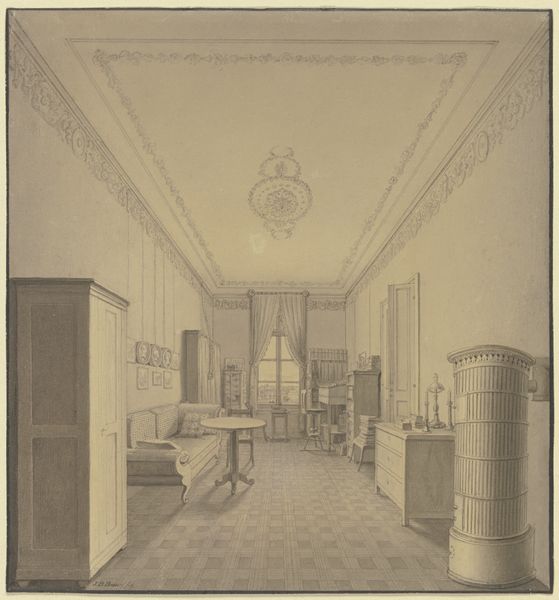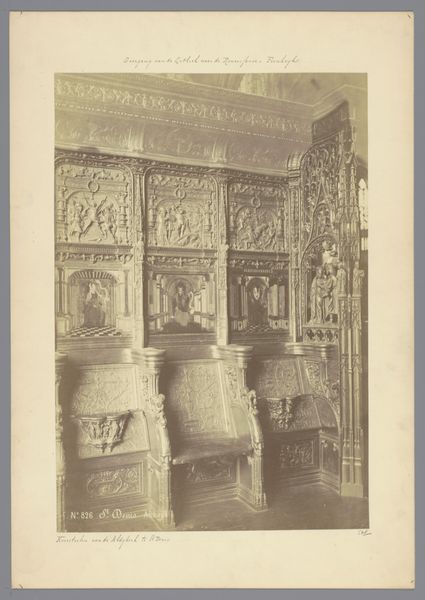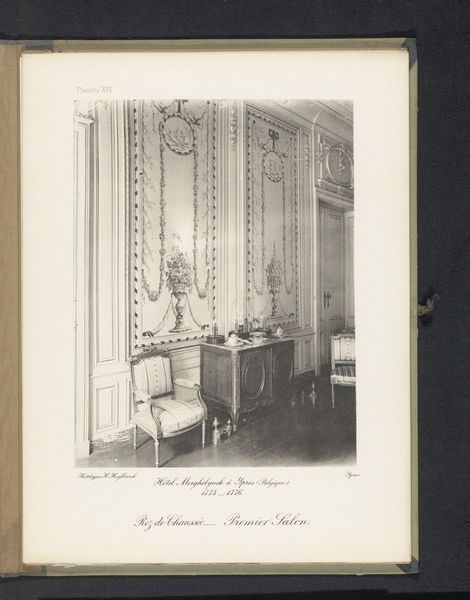
print, photography
# print
#
photography
Dimensions: height 449 mm, width 323 mm
Copyright: Rijks Museum: Open Domain
Curator: Looking at this piece, I immediately think of sumptuous materiality and staged intimacy. Editor: Indeed. This image, entitled "Interieur van een slaapkamer," offers a fascinating view into a late 19th or early 20th-century bedroom, rendered through photography and printmaking techniques. Curator: It’s a study in texture, isn't it? The eye is drawn to the elaborate ceiling ornamentation, the ornate patterns of the curtains, and the layering of materials across the chaise lounge. Editor: And how those patterns interact is socially coded. We have the decorative scheme within the Hôtel Beauharnais, a site infused with a history of political figures shaping its interior design. The public and private, the visible and the concealed—are intertwined in these elite settings. Curator: It’s tempting to see the craftsmanship in the overall scheme and imagine the workshops—the labour—that went into each component, from textile to architecture to photography. I want to see the hands that laid the gold leaf. Editor: Right. While the identity of the original artist here is Anonymous, the choices made by figures who commissioned or inhabited these spaces still speak to us across time. What did it mean to showcase this form of material wealth during a period of social and economic stratification? Curator: Considering it further, that chandelier hangs there, not merely to illuminate but as a display of commodity fetishism. It conceals just as much as it reveals. Editor: Certainly. Images like this perform crucial work; documenting evolving aesthetics while solidifying power structures and aspirations—a still, yet dynamic reflection of a bygone era. Curator: Thank you, this look into “Interieur van een slaapkamer” shows just how the layering of printmaking and photography brings the texture of an interior to life! Editor: My pleasure; reflecting on such visual documents allows us a deeper consideration of the historical power informing visual language and representation.
Comments
No comments
Be the first to comment and join the conversation on the ultimate creative platform.
